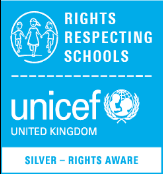
At Welford we aim to ensure our children become confident and competent users of the English language. Our key task in this subject is therefore to teach your child to speak, read and write effectively. We nurture confident children who engage in deep conversations and debates about topics and important issues. We teach children to question each other in a challenging, yet respectful way, to further their understanding and explore meaning.

In our school we offer children a varied reading diet.
In Early Years and Year 1 this includes a mix of regular one-to-one reading, shared reading sessions (often in small groups) and daily story time slots so that children are hearing stories, for pleasure, on a regular basis. In the second half of year 1 children will also begin guided reading groups focused on developing their comprehension.
In years 2 to 6 this diet becomes even more varied: some children continue one-to-one reading, and all children receive group and guided reading sessions, whole class reading sessions, independent reading time and story time / class read-aloud slots. This is all aimed at trying to build and develop a genuine reading culture amongst our children (both for pleasure and understanding).
Children receive a weekly book from our reading scheme (some one-to-one readers will be changed more regularly) to read at home with you and they can also borrow a book of their choice from their class library weekly and the school lending library fortnightly.
In developing children’s comprehension skills we have adopted the Reading VIPERS approach (as devised by Rob Smith and the Literacy Shed team) to ensure children receive a wide variety of reading activities that cover the range of comprehension skills required in the National Curriculum. We also make sure they practice these skills using a range of texts, from picture books and poetry to class novels, short films, songs and non-fiction.
Phonics – We now follow the ‘Sounds Write’ phonics scheme. Sounds-Write is a quality first synthetic phonics programme. Its purpose is to provide school staff with a comprehensive system with which to teach reading, spelling and writing. Children's phonic skills are woven into a curriculum which promotes a love of reading and places an emphasis on learning to read early which then allows our children to read to learn.
Reading Scheme - At our school we do not follow a single reading scheme, but the early stages of our scheme are based around Sounds Write's Initial and Extended Code. Therefore, we use their own synthetic phonics books that link explictily to the unit of the Initial and Extended Code the children are currently working upon. Beyond the extended code units we use a combination of banded books from published schemes such as Project X, Big Cat, Rigby, Connectors and Navigator Max and scheme novels that entertain, challenge and stretch our readers as they progress through Key Stage 2.


At Welford we equip children with the tools to format and construct their writing so it is understood by others giving them a purpose to write. We have developed a Reading into Writing approach that ensures children have read and deconstructed a range of model texts, and undertaken modelled and shared writing with their teacher, before attempting to write texts with greater independence.
During these learning sequences the teacher will explicitly model the writing process, while emphasising the importance of oral rehearsal and developing specific grammar, punctuation and authorial skills (using the Welford –ibles). At the end of a reading into writing sequence children are then given the chance to present or perform their work.
Following the end of a unit (but not immediately) children then write an independent piece - of the same text type but with different subject matter – where they are expected to apply their learning.






















